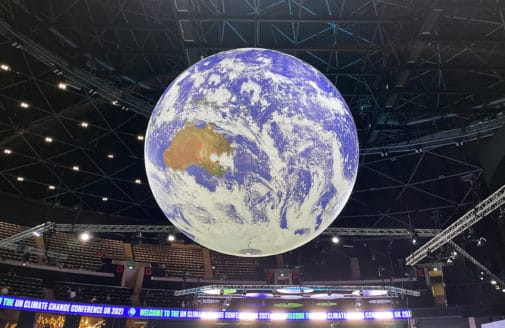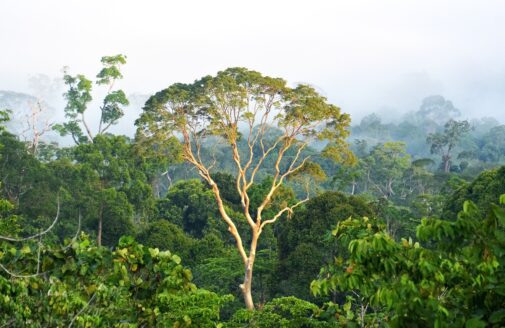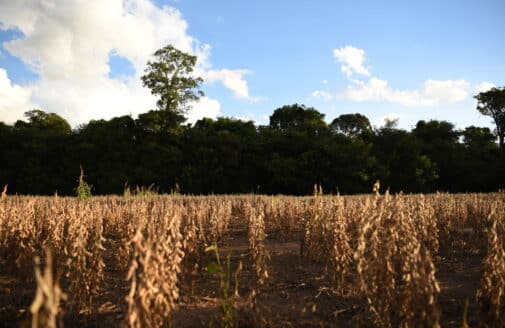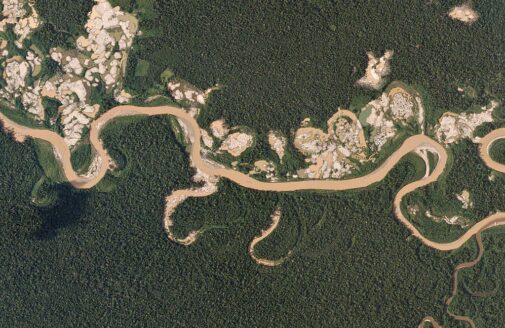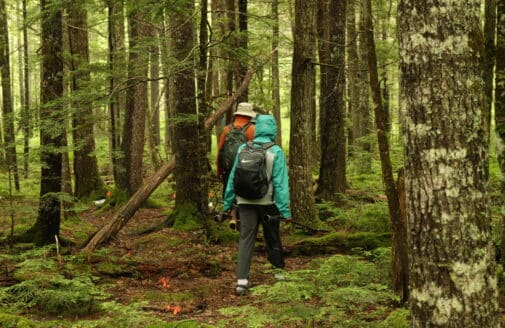The importance of forest nations allying for climate action
A new alliance for forest protection comes amid trends of mounting deforestation.

Pavilion at COP27, Sharm El-Sheikh Egypt.
photo by Heather Goldstone
This year, at COP27, Brazil, the Democratic Republic of Congo (DRC), and Indonesia signed a Forest Nations Alliance, declaring their intent to work together in achieving global deforestation goals. Together, these three countries hold over half of the world’s tropical forests. These forests are vital carbon sinks, the loss of which could result in an additional 1 degree of warming. But across the globe, deforestation has been trending upwards, placing mitigation goals at risk. The question is whether this new alliance can help move the needle in the right direction.
The new alliance comes at a crucial time for forests. In 2021, leaders of more than 100 nations at the COP26 climate conference in Glasgow declared a renewed commitment to halting forest loss and degradation by 2030. That pledge was accompanied by a 12 billion dollar pledge to address wildfires, and support restoration and Indigenous rights. However, analyses one year later declared the pledge “off to a slow start” and gave the world a D- grade on reversing deforestation trends.
In 2021, Brazil saw a 72% increase in the rate of deforestation compared to the prior three years. Much of this was associated with illegal occupation of public lands or unpermitted deforestation on private lands. Early numbers for 2022 show that trend continued with an estimated 10,057 square kilometers of forest lost in the Amazon between January 1 and December 2.
In the DRC, forest loss is driven mostly by low-yield, smallholder, subsistence agriculture. Most of the DRC’s rural population depends on natural resources for their livelihoods and are often forced to clear forests to feed their families.
Indonesia, in contrast, has seen record low deforestation rates in recent years, reducing forest loss for five years in a row. However, experts say a rebound is still possible if government policies don’t reinforce this success.
Despite these differing rates and drivers of deforestation, these influential tropical forest nations have united around a common goal. In effect, the alliance “unionizes” forest countries, making them a more formidable negotiating entity than any single country would be on their own.
“What they’re saying is ‘we’re more powerful together,’” says Woodwell Tropics Program director, Dr. Michael Coe. “Somebody has to be in the driver’s seat making changes and this way they are the ones doing the driving, rather than being driven.”
The agreement states that the nations will be pushing for payments in exchange for their work in reducing deforestation, and they will negotiate for a new “sustainable funding mechanism” to help developing countries preserve biodiversity.
“Negotiating as a block, these three countries are now well positioned to maximize the financing they desperately need to implement sustainable development and conservation objectives while ensuring the flow of capital remains stable over the long term,” says Carbon Program director Dr. Wayne Walker.
Looking ahead to 2023, there is optimism that Brazil will strengthen its forest policies as newly elected president Luiz Inacio “Lula” da Silva has pledged to end deforestation in the Amazon, stating, “There is no climate security for the world without a protected Amazon.”
If successful in advancing their goals, the alliance could attract other tropical forest nations to lend their support. Though we are currently not on track to halt deforestation by 2030, the creation of this alliance is a step in the right direction.




